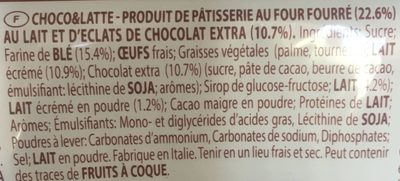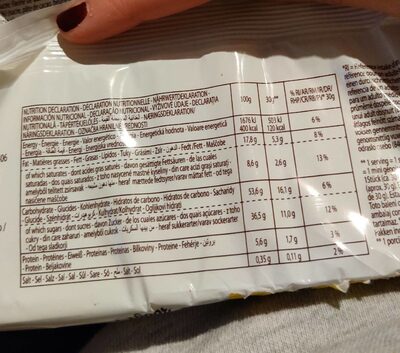Balconi choco & latte
This product page is not complete. You can help to complete it by editing it and adding more data from the photos we have, or by taking more photos using the app for Android or iPhone/iPad. Thank you!
×
Barra-kodea: 80602385
Markak: Balconi
Kategoriak: en:Snacks, en:Sweet snacks, en:Biscuits and cakes, Gozopil, en:Filled sponge cake slices
Etiketak, ziurtagiriak, sariak: en:Made in Italy
Matching with your preferences
Ingurumena
Ontziratzea
Transportation
Report a problem
Datuen iturria
Product added on by kiliweb
Last edit of product page on by moon-rabbit.
Produktuaren orria -gatik editatua elcoco, foodviewer, inf, openfoodfacts-contributors, roboto-app, thaialagata, yuka.VGJnZ0xZcGJ2ZU1FbnNZZDFRcm9wYzljK1pTcGYxR2FEc2twSVE9PQ, yuka.WnY1YU9xZFl2ZndXaE1Nd3dobndwZFpLMW9LbWVrYUZCZkVPSVE9PQ, yuka.XI9lJfmbL50NLsf-_78L0BbkKf-6CuFXH18jog.
If the data is incomplete or incorrect, you can complete or correct it by editing this page.











